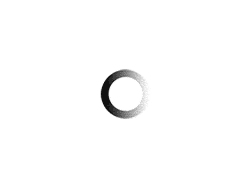The pocket size camera industry is one area within the consumer electronics community that keeps growing rapidly. You can probably guess that there is a lot of competition among the many manufacturers of this device. This kind of competition is wonderful news for you as a consumer. This competition drives innovation and the development of new features in addition to keeping the technology flowing. Check out the latest technology in pocket size cameras so you can find the perfect one for your Fujifilm FinePix F80EXR is a very respectable compact pocket size camera by all accounts. One of it’s appealing features is the mega zoom feature. This camera has 12 megapixels, which some only consider useful for large prints. It is reasonably priced considering it does have advanced functions. You can choose between three modes of EXR. What that does is it essentially makes the F80 a three in one type of camera. There are three modes: highest possible resolution mode; optimum dynamic range mode; and the lowest possible noise mode. More impressively, the F80EXR can also analyze the scene and make the best choice for you. The PowerShot SD 870 IS by Canon is next up for discussion. While many features are quite similar to the SD850 IS, there are some notable cosmetic differences. The LDC screen is slightly bigger at 3 inches and the camera boasts a slight increase in megapixels from 8 to 8.3. The Digic III image processor, however, is completely new and the camera boasts some advanced technology. This camera has shorter processing time partly due to the phenomenal face detection feature that is capable of detecting up to nine faces. The updated version features a control pad that is better ergonomically and more you’re looking for something that is less specialized and has more of an overall application, the Panasonic Lumix DMC-LX5 is a great option. It lacks jpeg processing ability, but you won’t be disappointed with your photos. This is a 10.1 megapixel pocket size camera with a 3 inch TFT LCD display. This is the follow up to Panasonic’s super successful DMC-LX3. Panasonic had to really work at trying to improve on the ‘ve found the improvements are not massive. The sensor in the LX5 is only about 30% more sensitive than that of the LX3. You will notice improved color because the LX5 LCD uses a higher index for color rendering and it has LED back lighting, as well. Far too many terrific digital pocket size cameras with so many fabulous features, don’t you think? What we’re seeing more often is the follow-up designs are improvements over shortcomings realized after design and production. But that is fine with many people, and us, as well. Bear in mind that people have all kinds of uses for their ultra compact cameras when looking for one that suits your lifestyle and purpose.
